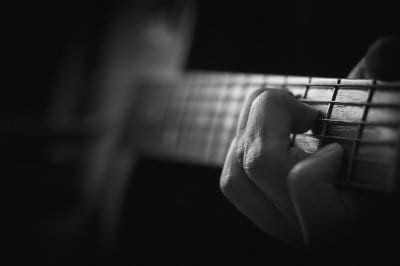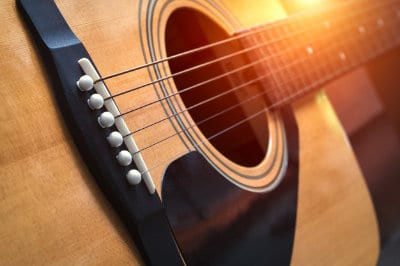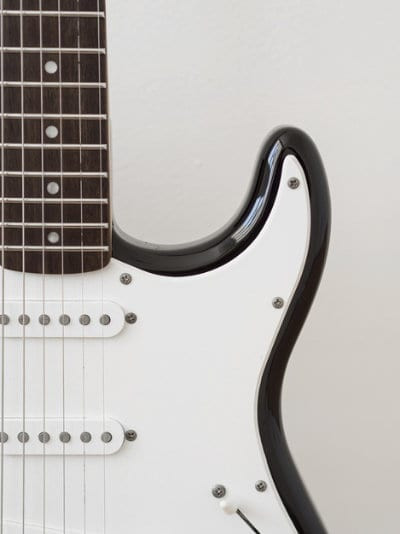If you’re just starting your guitar journey, you’re likely encountering the common challenge of finger pain. The initial discomfort from pressing down on guitar strings is a hurdle every beginner faces. In your search for relief, you might have come across guitar finger protectors – small, often plastic or silicone caps designed to cushion your fingertips. While they might seem like a quick fix to ease the pain and keep you playing longer, the reality is that relying on finger protectors can actually hinder your progress in the long run. This article will explore why, as a dedicated guitar player, you should reconsider using finger protectors and focus on developing your natural playing ability.
The Callus Question: Why Finger Protectors Fall Short
One of the primary reasons experienced guitarists advise against finger protectors is their interference with callus development. Calluses are those hardened layers of skin that naturally form on your fingertips as you consistently practice playing the guitar. Initially, the skin on your fingertips may feel tender, and you might even notice some peeling or flaking. This is a normal and essential part of the process.
These calluses are not a nuisance; they are your body’s natural adaptation to the demands of playing guitar. They act as a protective layer, reducing sensitivity and enabling you to play for extended periods without significant pain. With well-formed calluses, the guitar strings will no longer feel like they are digging into your fingers, allowing you to focus on your music.
 Guitar calluses development on fingertips
Guitar calluses development on fingertips
Using finger protectors creates a barrier between your fingertips and the strings. This prevents the direct pressure and friction needed to stimulate callus growth. By consistently using protectors, you’re essentially preventing your fingers from developing the toughness necessary to play comfortably and effectively over time. You might experience temporary pain relief, but you’re delaying the natural process that leads to long-term playing comfort and improved technique.
Guitar Technique and Finger Protectors: A Hindrance to Mastery
Beyond callus development, finger protectors can negatively impact your guitar playing technique. A crucial aspect of playing guitar is developing a feel for the strings. You need to be able to sense the string’s vibration, tension, and position accurately with your fingertips. Finger protectors, acting as an artificial layer, diminish this tactile feedback.
Techniques like string bending and vibrato, essential for expressive guitar playing, rely heavily on fingertip strength and sensitivity. These techniques require you to manipulate the string with precision and control, feeling the string against your callus to gauge the pressure and movement. Finger protectors can make it harder to execute these techniques effectively, as they reduce your direct contact with the strings and alter your perception of string tension. The result can be a less nuanced and controlled playing style.
Embracing the Learning Curve: Finger Pain as a Temporary Phase
Learning guitar requires dedication and perseverance. Experiencing finger pain in the beginning is a normal part of this journey, not a sign that you should resort to workarounds like finger protectors. Every guitarist, from beginner to virtuoso, has gone through this initial phase of finger discomfort.
Think of finger pain as a temporary initiation. As you continue to practice, your calluses will develop, and the pain will gradually subside. This process signifies progress and adaptation. By pushing through the initial discomfort (within reasonable limits, of course – take breaks when needed), you are actively conditioning your fingers and building the resilience necessary for comfortable and proficient guitar playing. Avoiding this phase with finger protectors is like skipping an important step in your guitar development.
Effective Alternatives to Finger Protectors for Pain Management
Fortunately, there are several effective and recommended strategies to manage finger pain without resorting to finger protectors, allowing you to develop naturally and improve your playing.
Opt for Lighter Gauge Strings
One of the simplest adjustments is to switch to lighter gauge guitar strings. Many guitars, especially acoustic guitars, come equipped with heavier gauge strings, which can be tougher on beginner fingertips. Thinner strings require less pressure to fret, making them significantly easier to play, especially during initial practice sessions. For electric guitars, consider moving from 010 gauge strings to 009s. For acoustic guitars, explore light gauge options instead of medium gauge strings. The reduced tension of lighter strings will lessen the pressure on your fingers, making practice less painful and more enjoyable, while still allowing for callus development.
 Different gauges of guitar strings for pain management
Different gauges of guitar strings for pain management
Consider Nylon String Guitars
Another excellent option, particularly for beginners, is to start with a nylon string classical guitar. Nylon strings are significantly softer and gentler on the fingertips compared to steel strings found on acoustic and electric guitars. Playing a nylon string guitar can be a comfortable way to learn fundamental guitar techniques, develop finger strength, and build coordination without the initial harshness of steel strings. While nylon strings might not build calluses as quickly as steel strings, they provide a pain-free entry point to guitar playing. You can always transition to a steel-string guitar later once you’ve built a solid foundation.
Electric Guitar Advantage for Beginners
Many beginners find starting with an electric guitar more comfortable than an acoustic guitar. Electric guitar strings are typically lighter gauge than acoustic strings and are set closer to the fretboard, requiring less finger pressure. This combination makes electric guitars generally easier on the fingers, reducing initial pain and making practice sessions more manageable. Furthermore, the lower action of electric guitars (string height from the fretboard) contributes to a smoother playing experience for developing fingers. Starting with an electric guitar allows you to build finger strength and calluses gradually, with less initial discomfort compared to a steel-string acoustic.
 Electric guitar as a beginner-friendly option to minimize finger pain
Electric guitar as a beginner-friendly option to minimize finger pain
Conclusion: Embrace the Process, Skip the Finger Protectors
While the idea of guitar finger protectors might be tempting for beginners seeking to avoid finger pain, they ultimately present more drawbacks than benefits. They hinder callus development, negatively impact technique, and prevent you from experiencing the natural progression of learning guitar. Finger pain is a temporary part of the journey, and by embracing it and utilizing effective alternatives like lighter strings, nylon string guitars, or starting with an electric guitar, you will develop stronger fingers, better technique, and ultimately, a more rewarding and fulfilling guitar playing experience. Focus on consistent practice, listen to your body (rest when needed), and allow your fingers to naturally adapt – your future self as a guitarist will thank you for skipping the finger protectors.
